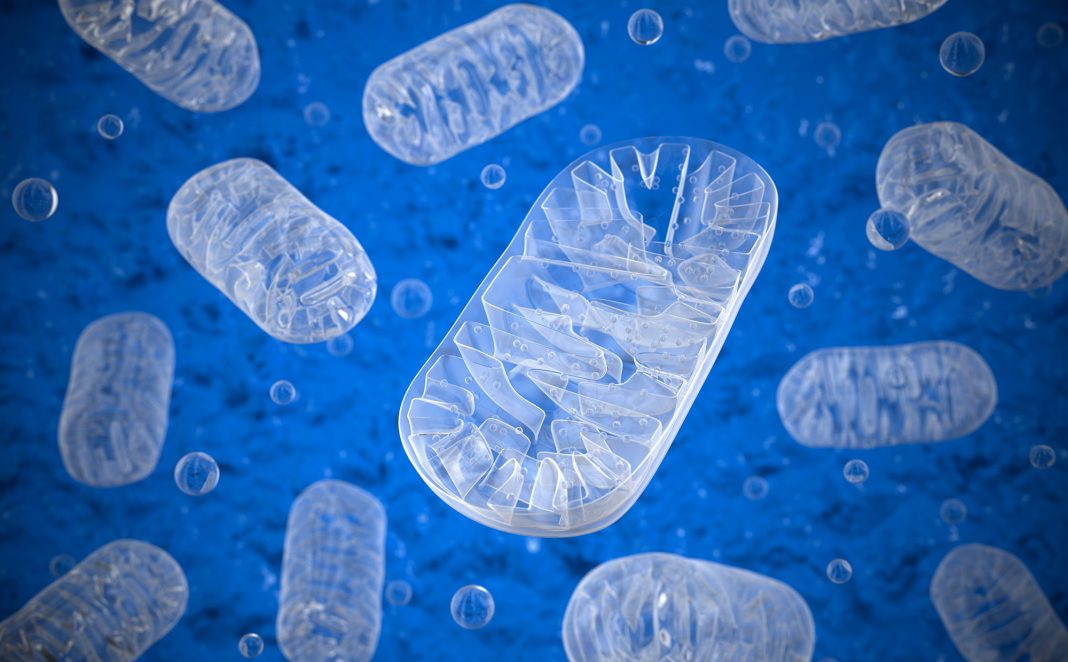An international research team headed by scientists at the ISIS Pulsed Neutron and Muon Source, Science and Technology Facilities Council (STFC), have for the first time characterized a unique molecular mechanism involved in the early stages of programmed cell death—apoptosis—a process that plays a crucial role in the prevention of cancer.
Using techniques including time-resolved neutron reflectometry and Fourier transform infrared spectroscopy, the researchers were able to determine how the pro-apoptotic protein Bax interacts with the mitochondrial outer membrane (MOM) in which it creates pores. The findings could have implications for future cancer research and therapeutic strategies.
Gerhard Gröbner, PhD, University of Umeå scientist and co-lead author of the team’s published paper in Science Advances, said, “The unique findings here will not only have a significant impact in the field of apoptosis research but will also open gateways for exploring Bax and its relatives as interesting targets in cancer therapy such as by tuning up their cell-killing potential.” Gröbner, together with co-lead author and STFC Neutron and Muon Source scientist Luke Clifton, PhD, and partners at the European Spallation Source in Sweden, reported their findings in a paper titled, “Creation of distinctive Bax-lipid complexes at mitochondrial membrane surfaces drives pore formation to initiate apoptosis.” In their paper, they wrote, “Our findings provide a robust molecular understanding of mitochondrial membrane perforation by cell-killing Bax protein and illuminate the initial phases of programmed cellular death.” The study represents the most recent in a series of research collaborations by the team investigating the cellular proteins responsible for apoptosis.
Apoptosis is essential for human life, and its disruption can cause cancerous cells to grow and not respond to cancer treatment. In healthy cells, apoptosis is regulated by two proteins, Bax and Bcl-2, which have opposing roles. “The most prominent multidomain members of the Bcl-2 family are the apoptotic Bcl-2–associated X protein (Bax) and the antiapoptotic Bcl-2 protein itself,” the researchers explained.

The soluble Bax protein is responsible for the clearance of old or diseased cells, and when activated, it perforates the cell mitochondrial outer membrane to form pores that trigger programmed cell death. This can be offset by Bcl-2, which is embedded within the mitochondrial membrane, where it acts to prevent untimely cell death by capturing and sequestering Bax proteins. “Pro- and antiapoptotic members of this family meet at the MOM, and they arbitrate the cell’s fate there: intact membrane and survival versus permeabilization and death,” the authors further stated. “Failure in this regulation process can cause various pathological disorders ranging from embryonal defects to cancer. In cancerous cells, the survival protein Bcl-2 is overproduced, leading to uninhibited cell proliferation. While this process has long since been understood to be important to the development of cancer, the precise role of Bax and the mitochondrial membrane in apoptosis has been unclear until now. “Although intensively studied, the molecular mechanism by which these proteins create apoptotic pores remains elusive,” the investigators continued.
For their study, the team used a technique known as neutron reflectometry (conducted using the advanced ISIS Surf and Offspec instruments) to study in real time the way that the Bax protein interacts with lipids present in the mitochondrial membrane, during the initial stages of apoptosis. By employing deuterium-isotope labeling, they determined for the first time that when Bax creates pores, it extracts lipids from the mitochondrial membrane to form lipid-Bax clusters on the mitochondrial surface.
By using time-resolved neutron reflectometry in combination with surface infrared spectroscopy in the ISIS biolab, they were able to see that this pore creation occurred in two stages. Initial fast adsorption of Bax onto the mitochondrial membrane surface was followed by a slower formation of membrane-destroying pores and Bax-lipid clusters, which occurred simultaneously. This slower perforation process occurred on timescales of several hours, comparable to cell death in vivo.

This is the first time that scientists have found direct evidence of the involvement of mitochondrial lipids during membrane perturbing in cell death initiated by Bax proteins. The findings build on those of previous work by the team on the molecular mechanism of membrane-bound Bcl-2, to inform a more complete understanding of the early stages of apoptosis. “The detailed view of Bax pore assembly with the discovery of Bax-lipid clusters obtained by our time-resolved NR approach provides a solid foundation to understand the membrane-destroying function of apoptotic multidomain members of the Bcl-2 family in general and opens up the way for overcoming their molecular inhibition in many tumors in the search for cancer therapies,” the scientists commented.
Clifton suggested, “This work has both advanced our knowledge of fundamental mammalian cell processes and opened exciting possibilities for future research. Understanding what things look like when cells work properly is an important step to understanding what goes wrong in cancerous cells and so this could open doors to possible treatments … As far as we can tell, this mechanism by which Bax initiates cell death is previously unseen. Once we know more about the interplay between Bax and Bcl-2 and how it relates to this mechanism, we’ll have a more complete picture of a process that is fundamental to human life. This work really shows the capabilities of neutron reflectometry in structural studies on membrane biochemistry.”
The authors further concluded, “These results give precision structural and kinetic details on Bax remodeling of the MOM and provide an explanation of the overlapping events of pore formation and lipid complexation. Thus, they reflect Bax activity in mitochondria during apoptosis, demonstrating how apoptotic Bcl-2 proteins such as Bax remodel the supramolecular architecture of the MOM shell to further drive apoptosis towards its ultimate goal, the removal of doomed cells.”
Additional research is planned at ISIS to further elucidate the molecular mechanism of apoptosis and in particular, to characterize the interplay between Bax and Bcl-2. It is hoped that this will yield insights that will open new avenues of research to continue to develop our understanding of the cellular processes necessary for human life.






